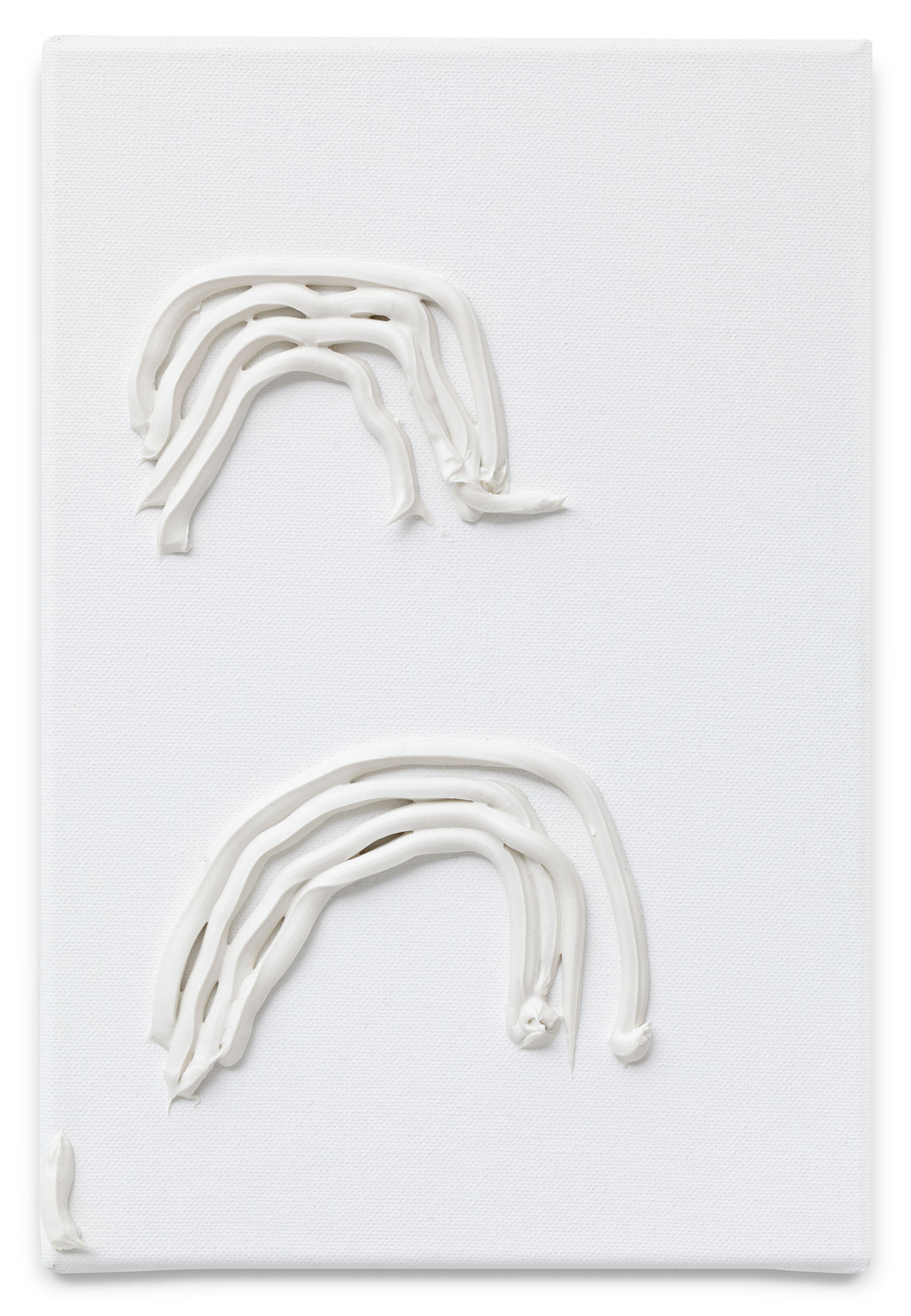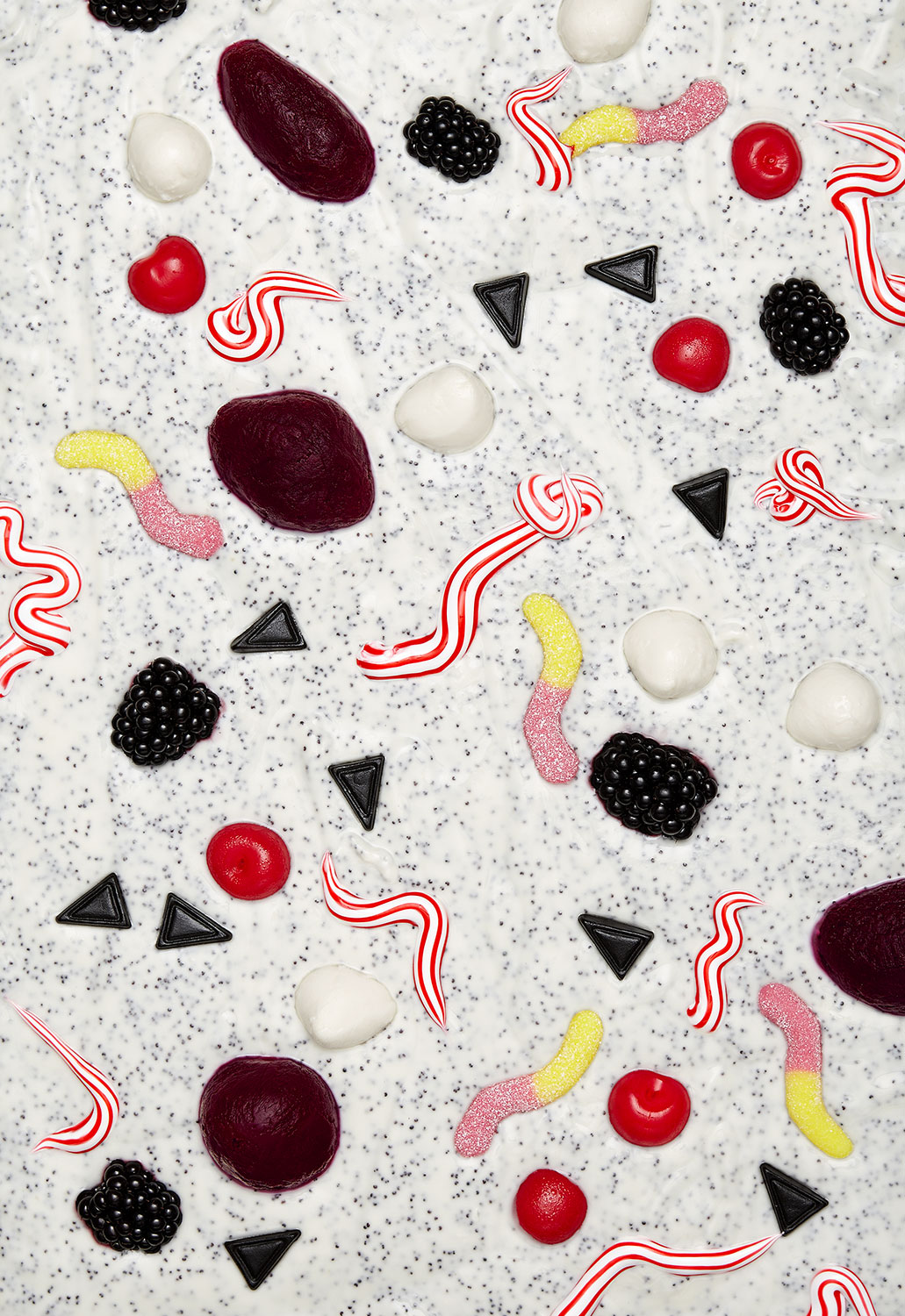
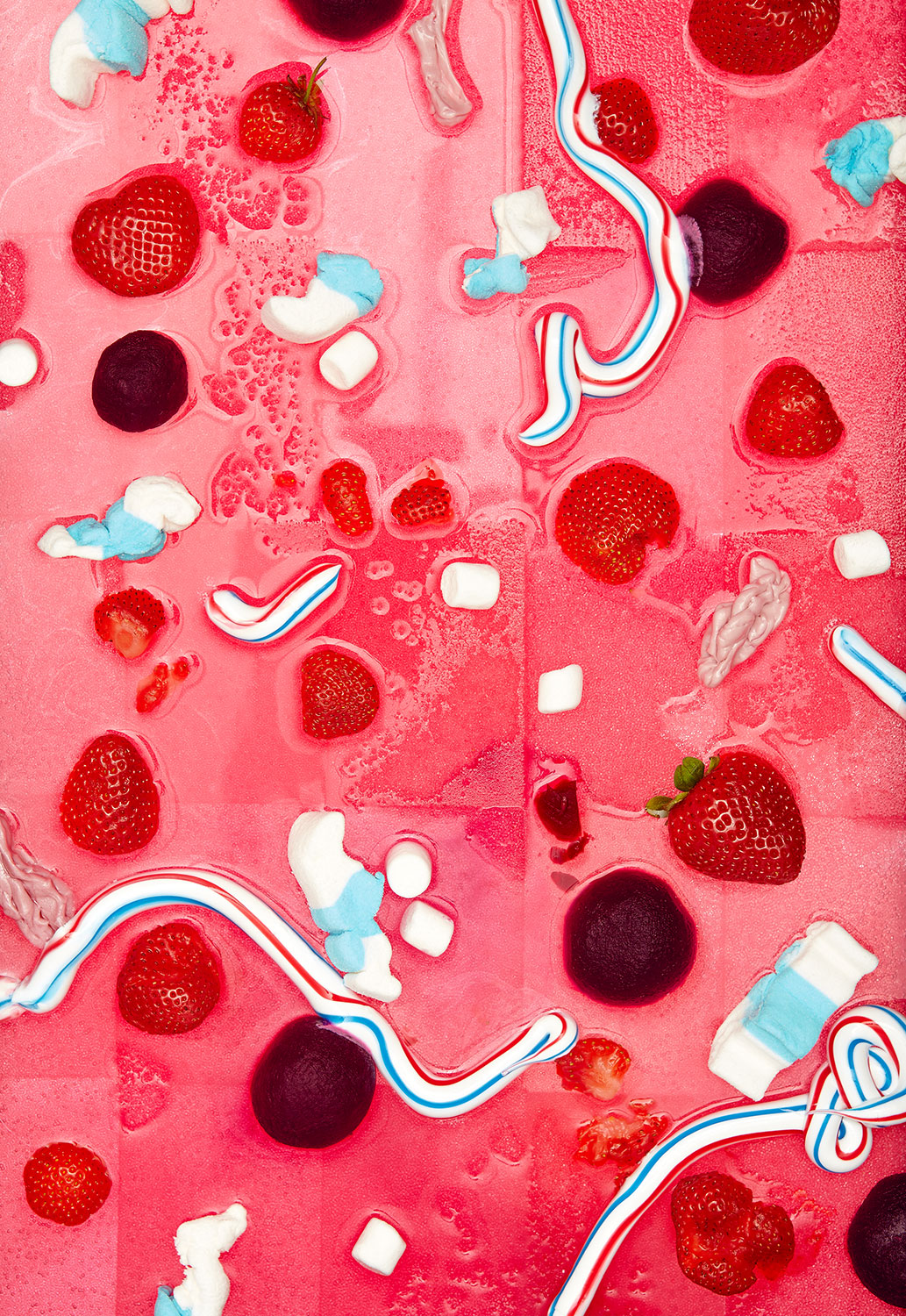
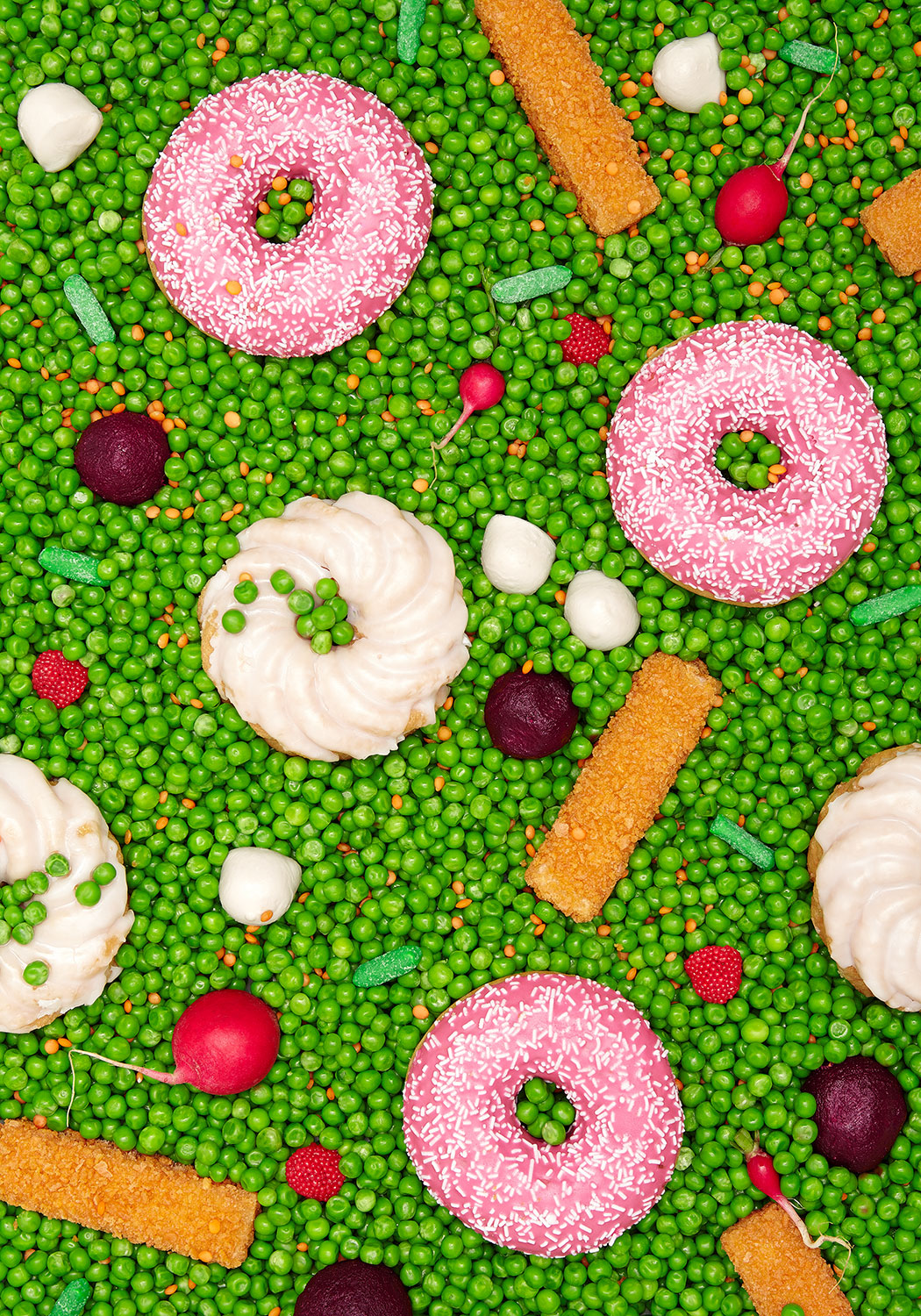
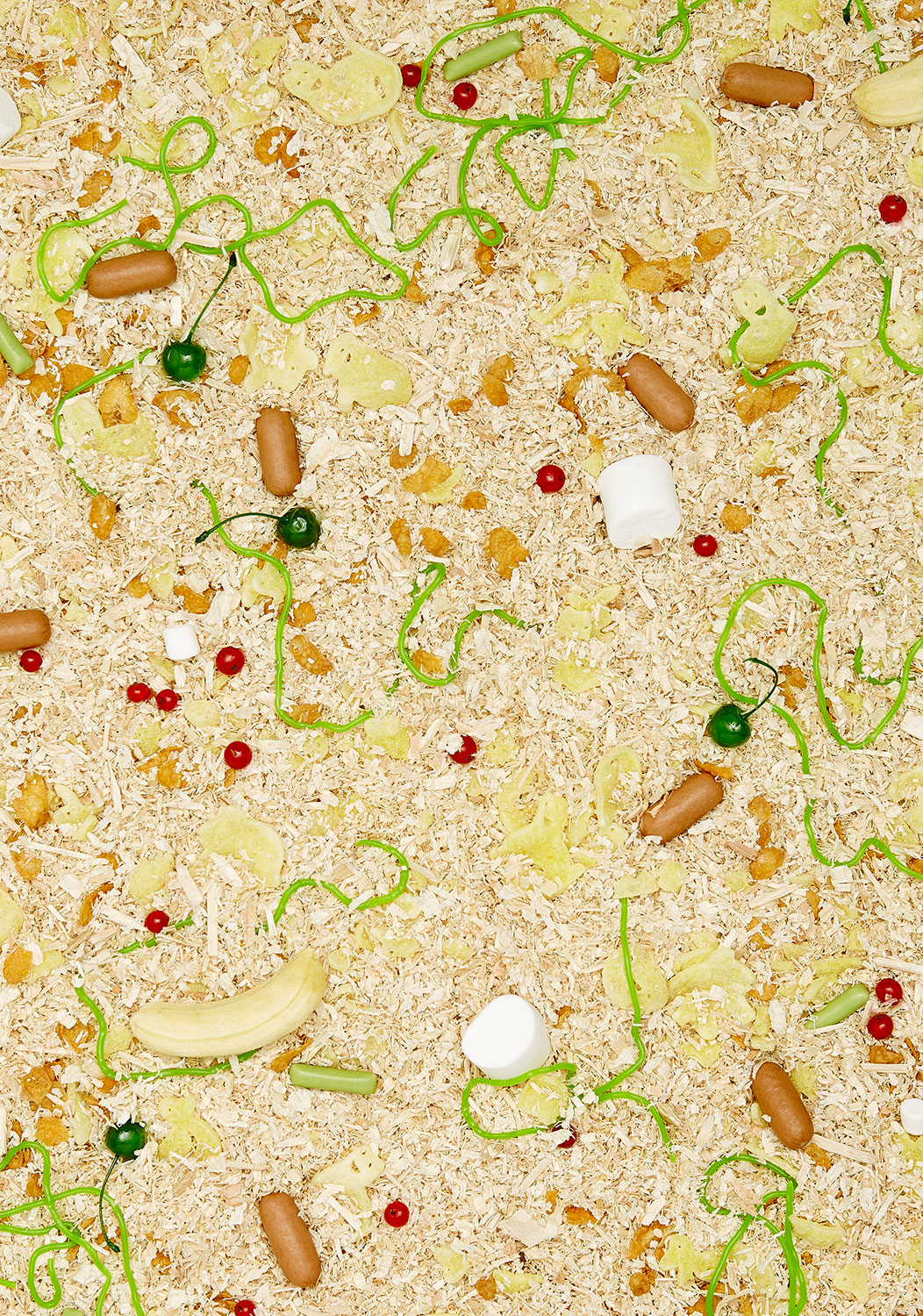
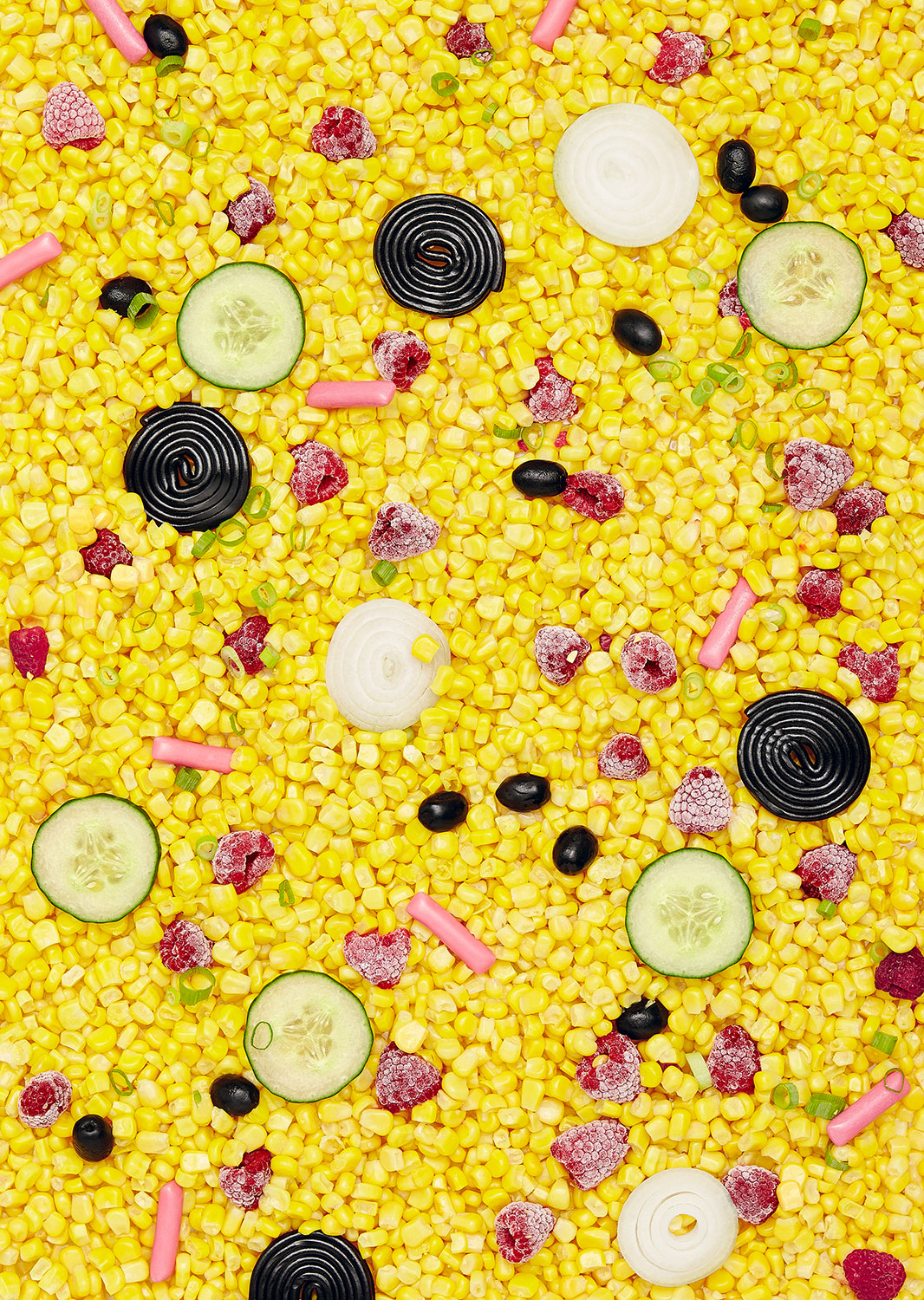
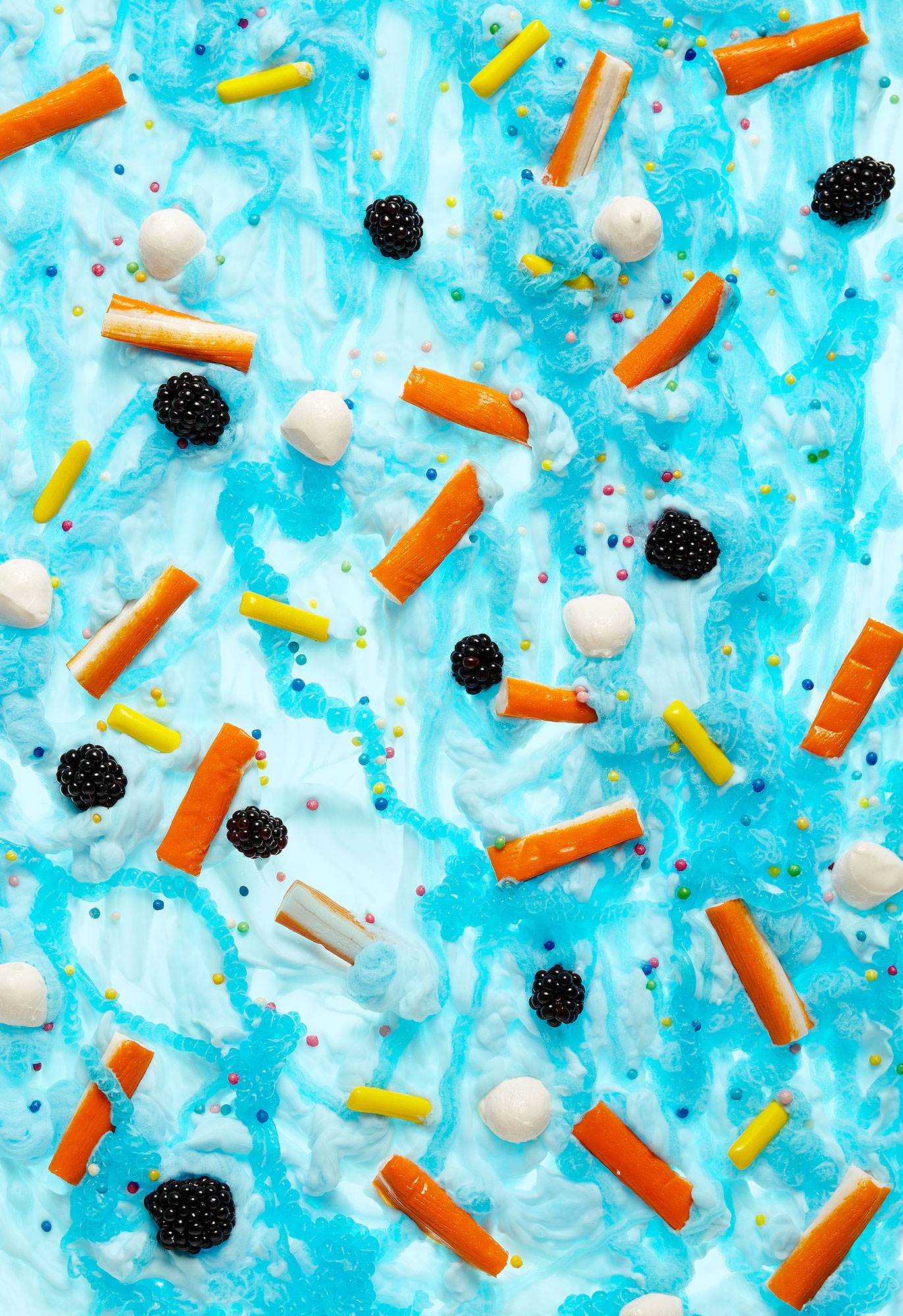
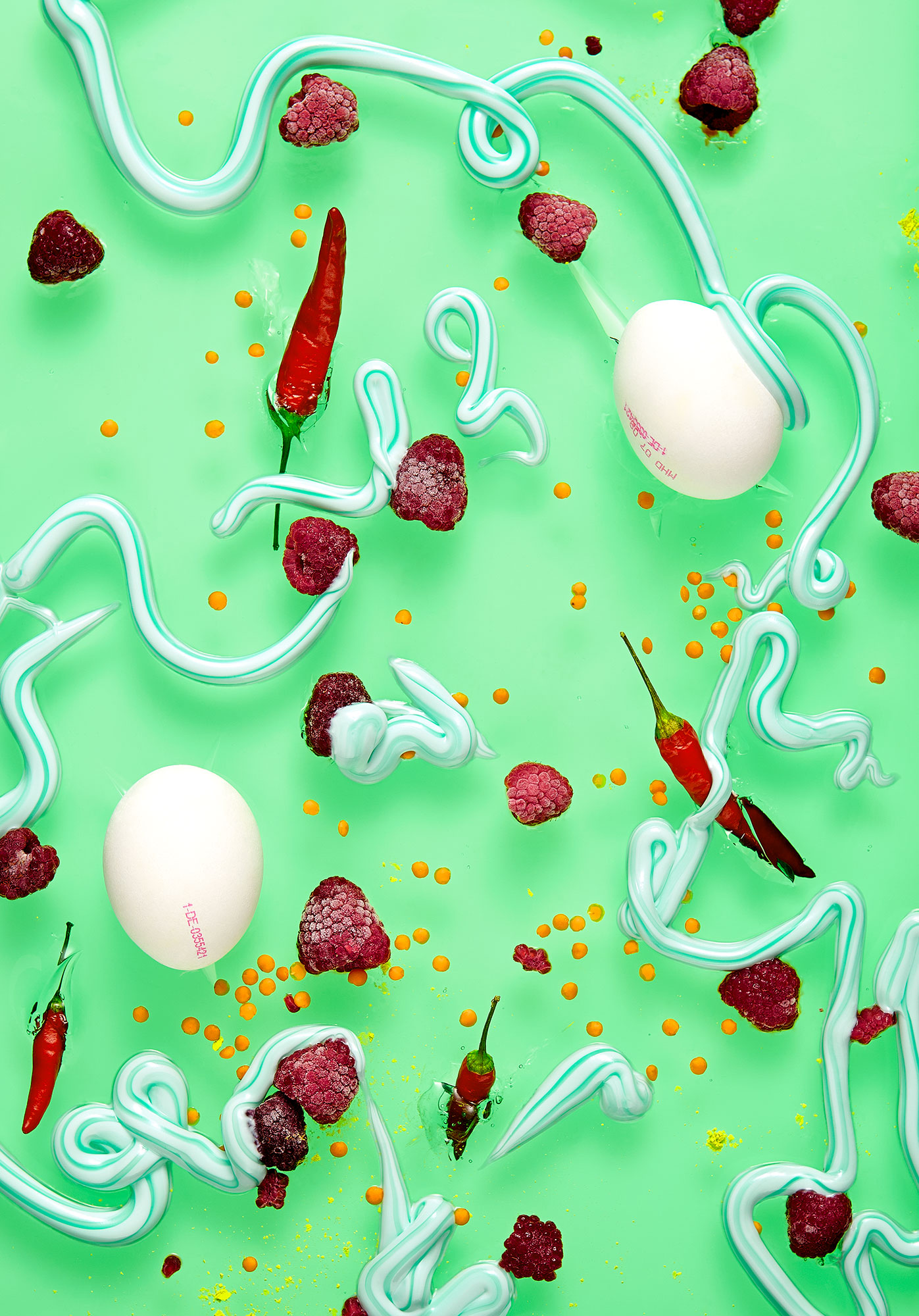
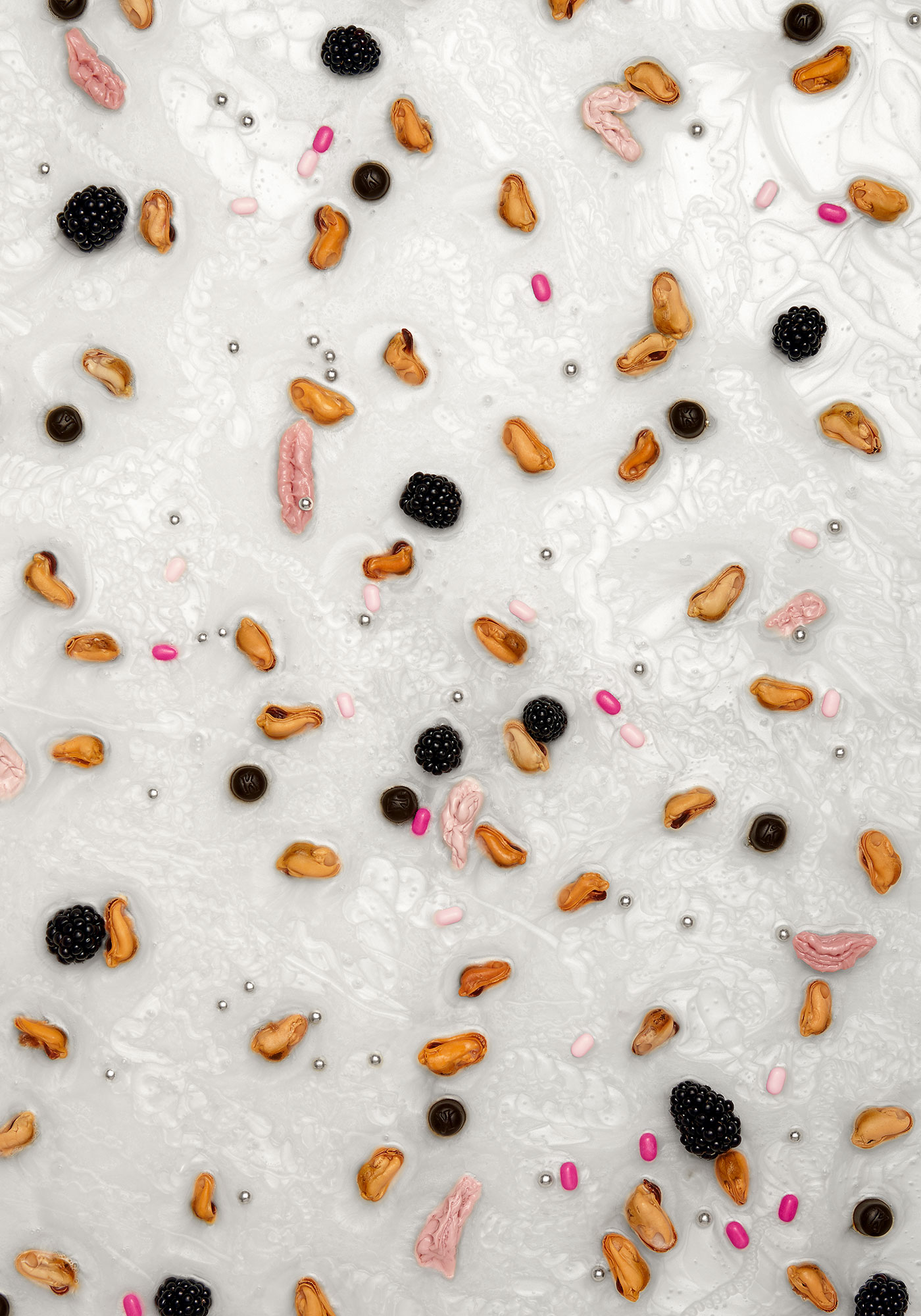








German translation below.
Over time we have become disconnected from what we eat. Some of us wander through supermarkets trying to confirm where our chicken comes from, whether it lived a happy life or had back problems due to its big breasts. Others have given up on trying to find their way through the labyrinth of additives on packaging and compromise depending on the mood on the day: organic today, fair trade tomorrow and the day after that who knows. According to both science and the industry most consumers do not care about the production method of our food. The purchases should preferably be cheap and immaculate. But everyone who has stood under an apple tree or gazed into the mirror in the morning knows: Mother Nature rarely produces perfection. And yet again when strolling through supermarket aisles that resemble toyshops rather than the stalls on the weekly market, one has to come to the conclusion: there’s been a bit of tweaking going on!
Well this isn’t ground breaking news and at regular intervals we hear of horse contaminated products, composite cheese or strawberry yoghurt without there ever having been a strawberry involved in it’s production. Next to the triumphal procession of organic food, the mass of products in our supermarkets seems to become more and more abstract. Lemonade displayed in the same glaring blue as the vibrant washing up liquid. Strawberry yoghurt with 0,1 % fat but a creamy texture where its surface at least is indistinguishable from the texture of tooth paste. How much cheese can a slicette of Chester contain if no refrigeration is required? The World Championship special edition of Kleiner Feigling with peanut flip taste? Who on earth would want to drink that?
The reports on factory farming producing miserable living conditions for animals connected to our food have converted many to vegetarianism or even to veganism. Meat eaters have also become more sensitive. But instead of changing the living conditions of the animals we are concentrating on design: discrete, bloodless pieces of meat for the modern meat consumer, preferable hidden in a marinade or as sausages. For the vegetarians the chicken imitation is enriched with various flavours and other additives. Nevertheless the label suggests that all this comes from single cows standing on grand juicy green meadows or from a place where a cheerful windmill stands with rotary blades made of sausages.
More than ever our food has become a product rather than nourishment. Matter at the end of the supply chain, faceless without origin. It follows trends, like fashion does, or the shape of cars, focusing on image to deliberately mask its content.
These were the underlying thoughts throughout the series “Quantum Satis”. While global marketing is trying to furnish highly artificial consumer goods with sensual connotations, it was my intention to show them for what they are: artificial, synthetic, mass-produced industrial design products. Ignoring motherly rules of not playing with food, I developed with the help of my very talented friends, Eva Jauss and Michael Breyer, eight patterns of contemporary food material. In doing so the contrast between the strong aesthetics of these mass-produced products and their simultaneously perishable nature, as well as the contrast between visual attraction and disgust was of great concern to us. Especially the combination of illustrated content, apparently natural, unprocessed and strongly designed food gives us a realistic image of what we consume nowadays. It is the same appeal that lures us into reaching for the poppy seed marzipan yogurt in the refrigerated shelves. We are deceived until we look more closely.
Wir haben schon seit Längerem jeglichen Bezug dazu verloren, was wir essen. Einige von uns streunen bemüht durch die Supermarktregale, in der Hoffnung herauszufinden, woher unser Hühnchen kommt, ob es denn glücklich war oder Rückenprobleme hatte vor lauter Brust. Manch einer hat aufgegeben sich zurechtzufinden im Zusatzstofflexikon der Packungsrückseiten und improvisiert je nach Tagesform: heute mal Bio, morgen Fair Trade und übermorgen egal.
Die meisten Verbraucher kümmern sich jedoch, laut Industrie und Forschung, wenig um die Herstellungsweise unserer Lebensmittel. Möglichst günstig und makellos sollen die erworbenen Produkte sein. Doch wer schon einmal unter einem Apfelbaum stand oder morgens gelegentlich in den Spiegel guckt weiß: Mutter Natur bringt selten Vollendetes hervor. Und wer dann wiederum an Supermarktregalen entlanggeht, die mehr Auslagen von Spielwarengeschäften gleichen als den Ständen auf dem Wochenmarkt, kann nur einen Schluss ziehen: Hier wird optimiert!
Nun ist das nichts Neues und man hört in regelmäßigen Abständen von verstecktem Pferdefleisch, Analogkäse oder Erdbeerjoghurts, die nie eine Erdbeere enthielten. Doch neben dem andauernden Siegeszug der Biolebensmittel, scheint die Masse an Produkten in unseren Supermärkten immer abstrakter zu werden. Limonade leuchtet uns in demselben Blau eines Spülmittels entgegen. Der zu 0,1%-fettreduzierte, gestrudelte Erdbeerjoghurt ist zumindest formal nicht mehr von Zahnpasta zu unterscheiden. Wieviel Käse kann ein Scheibletten-Chester enthalten, wenn er nicht einmal gekühlt werden muss? WM-Sonderedition Kleiner Feigling mit Erdnussflips-Geschmack? Wer trinkt so etwas?
Die Berichte von miserablen Lebensbedingungen der mit unserem Essen in Zusammenhang stehenden Tiere haben viele zum Vegetarismus konvertieren oder gar zu Veganern werden lassen. Der Fleischesser ist auch empfindlicher geworden. Statt jedoch etwas an den Umständen der Tiere zu ändern, wird wieder kräftig designt: Diskrete, blutlose Stücke Fleisch für den modernen Fleischkonsumenten, gerne in Marinade oder Wurst versteckt. Für den Vegetarier mit reichlich Aroma- und Zusatzstoffen versehene Hähnchenimitate. Und dabei stammt laut Etikettierung all dies immer noch von vereinzelt auf saftigen grünen Wiesen herumstehenden Kühen, aus lustigen Mühlen mit Rotorblättern aus Wurst.
Unser Essen ist mehr denn je Produkt statt Nahrung. Material am Ende einer Wertschöpfungskette, geschichtslos, ohne Ursprung. Es folgt Trends wie die Mode oder die Gestalt unserer Autos, behauptet viel Oberfläche für sich aber verschleiert seinen Inhalt dabei vorsätzlich.
Dies waren die Grundüberlegungen zu der Reihe „Quantum Satis“. Während das globale Marketing versucht, diese höchst artifiziellen Konsumgüter mit sinnlicher Konnotation zu versehen, war es meine Intention, sie stattdessen einmal als das zu zeigen, was sie sind: plastikgleiche, massenindustriell gefertigte Designprodukte. Entgegen der mütterlichen Vorschrift, nicht mit Essen zu spielen, entwickelte ich mit Hilfe meiner beiden schwer talentierten Freunde Eva Jauss und Michael Breyer, 8 Patterns aus zeitgenössischem Essensmaterial. Dabei war uns der Kontrast zwischen der starken Ästhetik dieser Massenprodukte und seiner gleichzeitig doch verderblichen Natur, der Kontrast zwischen visueller Attraktion und Ekel ein besonderes Anliegen. Gerade die Kombination aus sichtbar gemachten Inhaltsstoffen, scheinbar natürlichen, unverarbeiteten und stark designten Lebensmittel gibt uns ein realistisches Bild davon, was wir heutzutage konsumieren. Es ist derselbe Reiz, der uns im Kühlregal zum Mohn-Marzipan-Joghurt greifen lässt. Wir sind verführt, bis wir genau hinsehen.




